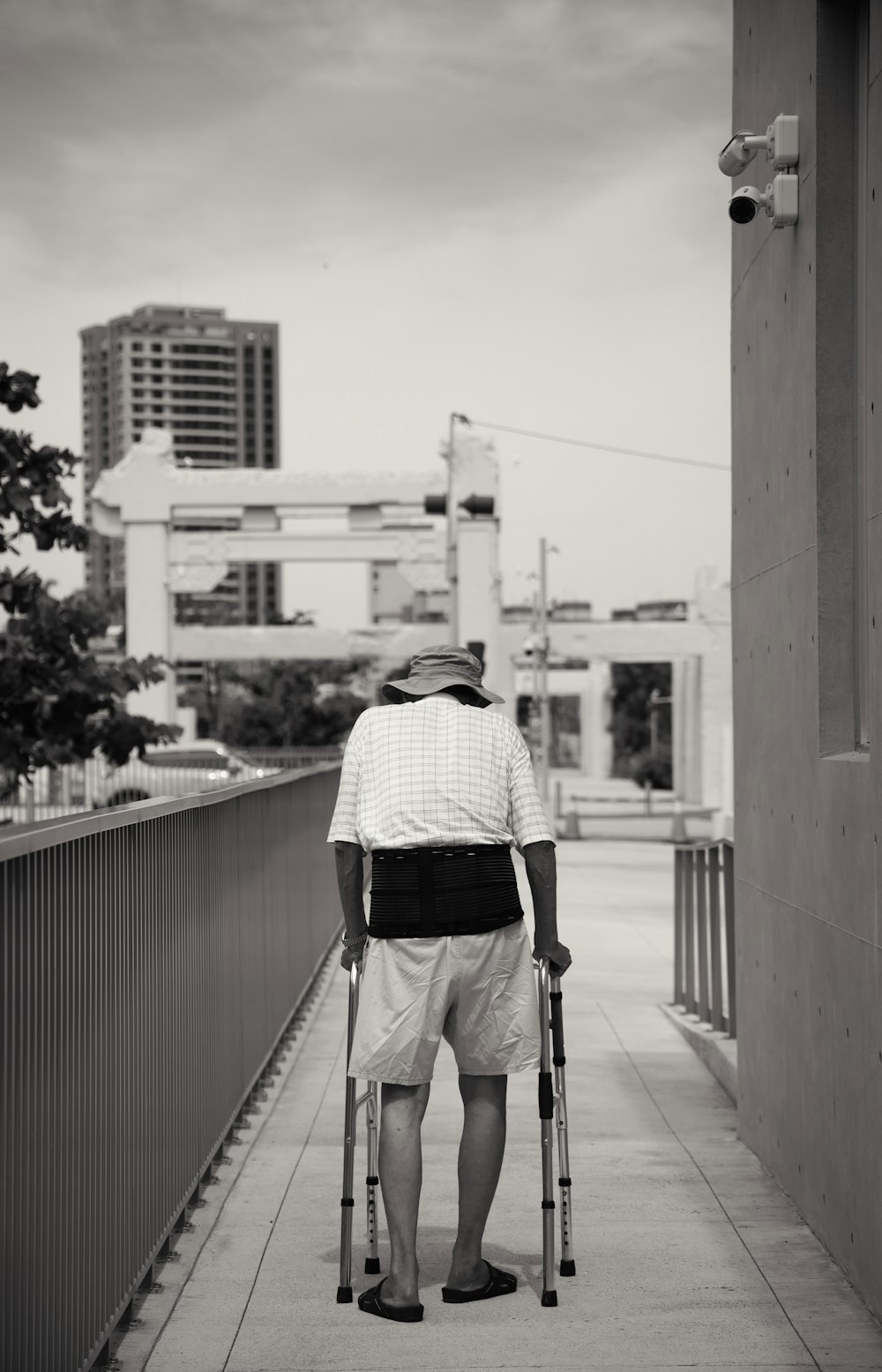目次
体幹屈曲姿勢が変形性膝関節症の進行に与える影響は?
変形性膝関節症例では胸腰椎が後弯し体幹屈曲姿勢を呈した症例が少なくありません.
体幹屈曲姿勢というのは変形性膝関節症を進行させるのでしょうか?
それとも予防に働くのでしょうか?
今回は体幹屈曲姿勢が変形性膝関節症の進行に与える影響を考えるうえで参考になる論文をご紹介させていただきます.

今回ご紹介する論文
Knee. 2021 Dec;33:216-225. doi: 10.1016/j.knee.2021.10.006. Epub 2021 Oct 27.
Increased trunk flexion may underlie elevated knee flexor activity in people with knee osteoarthritis
Stephen J Preece 1, Wael Alghamdi 2
Affiliations expand
PMID: 34717093 DOI: 10.1016/j.knee.2021.10.006
今回ご紹介する論文は2021年に掲載された論文です.
研究の背景
Background: Previous research has demonstrated elevated activation of the knee flexor muscles in people with knee osteoarthritis. People with this condition have also been observed to walk with increased trunk flexion; this may alter biomechanical loading patterns and change muscle activation profiles. Therefore, the aim of this study was to understand the biomechanical effect of increasing trunk flexion during walking.
これまでの研究では変形性膝関節症患者では膝屈筋の活性化が高いことが示されています.
また変形性膝関節症例は体幹の屈曲が大きくなっていることが観察されており,これにより生体力学的な負荷パターンが変化し,筋の活性化プロファイルが変化する可能性があります.
この研究では歩行中に体幹の屈曲を増加させることによる生体力学的影響を検討することを目的としております.
研究方法
Methods: Kinetic and EMG data were collected from a sample of 20 people with knee osteoarthritis and a sample of 20 healthy matched controls during normal walking. Using a biofeedback protocol, participants were subsequently instructed to walk with a 5° increase in trunk flexion. Sagittal moments, muscle activations and co-contractions were then compared across a window in early stance with a two-way ANOVA test.
変形性膝関節症例20例と健常対照者20例から,通常歩行時の運動量と筋電図のデータを収集しました.
バイオフィードバックプロトコルを用いて,参加者に体幹の屈曲を5°増加させながら歩くように指示しました.
その後,矢状モーメント,筋活動,共収縮を二元配置分散分析で初期立脚のウィンドウで比較しております.
研究の結果
Results: When trunk flexion was increased, there was a corresponding increase in activity of the medial and lateral hamstrings and gastrocnemius muscles as well as a rise in medial co-contraction. This effect was consistent across the two groups. The most pronounced effect was observed for semitendinosus, which showed a dramatic change in activation profile in the healthy group and a 127% increase in activation during early stance.
体幹の屈曲を増加させると内側・外側ハムストリングスと腓腹筋の活動が増加し,内側の収縮も増加しました.
この効果は2つのグループ間で一貫しておりました.
最も顕著な効果は半腱様筋に認められ,健常者群では活性化プロファイルに劇的な変化が見られ,立脚初期に127%の活性化が見られました.
研究の結論
Conclusions: This is the first study to demonstrate that increased trunk flexion in people with knee osteoarthritis may explain, to some degree, the elevated knee flexor activity and medial co-contraction which is associated with this disease. These findings motivate further work to understand the therapeutic potential of interventions designed to improve postural alignment.
この研究は変形性膝関節症患者における体幹屈曲の増大が,この疾患に関連する膝屈筋の活動性の上昇と内側の共縮をある程度説明できる可能性を示された最初の研究であります.
これらの知見は姿勢のアライメントを改善するための介入の治療的可能性を理解するための更なる研究の動機付けとなります.
今回は体幹屈曲姿勢が変形性膝関節症の進行に与える影響を考えるうえで参考になる論文をご紹介させていただきました.
膝屈曲位の歩行となり体幹が屈曲位となることで膝関節内側の共同収縮が増加し膝関節の圧縮力が増加するということですね.
変形性膝関節症例ではknee spine syndromeでは膝関節屈曲拘縮によって脊椎屈曲姿勢を呈するわけですが,今回の結果を考えるとこれは悪循環ですね.






